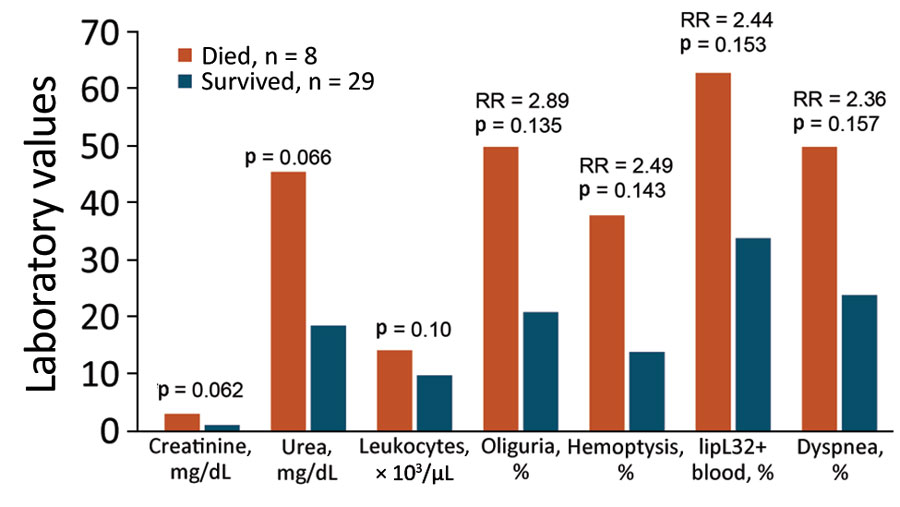Volume 30, Number 8—August 2024
Synopsis
Outbreak of Intermediate Species Leptospira venezuelensis Spread by Rodents to Cows and Humans in L. interrogans–Endemic Region, Venezuela
Figure 2

Figure 2. Clinical features most strongly associated with fatal outcomes in study of outbreak of intermediate species Leptospira venezuelensis spread by rodents to cows and humans in L. interrogans–endemic region, Venezuela. Clinical features are shown for hospitalized patients who had positive PCR tests for the Leptospira rrs (16S rDNA) gene in blood or urine and either survived or succumbed to their illness. Laboratory units of measure are indicated on the x axis for each bar. Comparisons of all clinical features with 95% CIs were also determined (Appendix Tables 12, 13). p values comparing creatinine, urea, and number of lymphocytes were obtained from Pearson χ2 tests. p values comparing percentages of patients with oliguria, hemoptysis, lipL32, and dyspnea were obtained from 2-tailed t-tests. All statistical calculations were performed by using Stata 13 (StataCorp LLC, https://www.stata.com). RR, risk ratio.
1Current affiliation: Universidad de las Fuerzas Armadas ESPE, Santo Domingo, Ecuador.
2Current affiliation: Universidad de Buenos Aires, Buenos Aires, Argentina.
3Current affiliation: Institut Pasteur de Montevideo, Montevideo, Uruguay.
4Current affiliation: The University of North Carolina, Chapel Hill, North Carolina, USA.